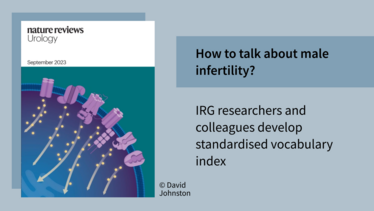Introducing a Standardised Vocabulary for Studies of Male Infertility
Male infertility, a common condition of increasing concern, is about to benefit from a major advancement. Clinical geneticists and andrologists have joined forces to introduce a standardised vocabulary that promises to transform the field of research related to non-syndromic male infertility. Their paper, co-authored by Münster-based researchers Margot Wyrwoll, Sabine Kliesch, and Frank Tüttelmann, among others, has recently been published in Nature Reviews Urology.
Currently, the terminology used to describe phenotypes of non-syndromic male infertility varies widely, depending on local institutions and country-specific guidelines. This lack of systematic vocabulary has created challenges in communication, data sharing, and collaboration between experts in the field.
To address this issue, the International Male Infertility Genomics Consortium set out to provide an expert recommendation for a standardised vocabulary. This recommendation is now incorporated in the Human Phenotype Ontology (HPO), a widely adopted tool. It introduces a standardised vocabulary for describing distinctive phenotypes, such as "non-obstructive azoospermia due to round spermatid arrest". This clarity of terminology should greatly facilitate communication between professionals.
While the newly established framework aims to provide the best possible approximation to a standardised nomenclature, it also recognises the complexity of clinical phenotypes in male infertility. Nevertheless, this significant step forward promises to streamline research, improve patient care, and increase the understanding of non-syndromic male infertility. This includes improved sharing of data between research groups to avoid misunderstandings and facilitate collaboration. In addition, clinical andrologists will benefit from a precise vocabulary, enabling better communication with colleagues and staff. Geneticists will be able to select specific patient cohorts with related phenotypes, promoting the discovery of novel causes of male infertility.



